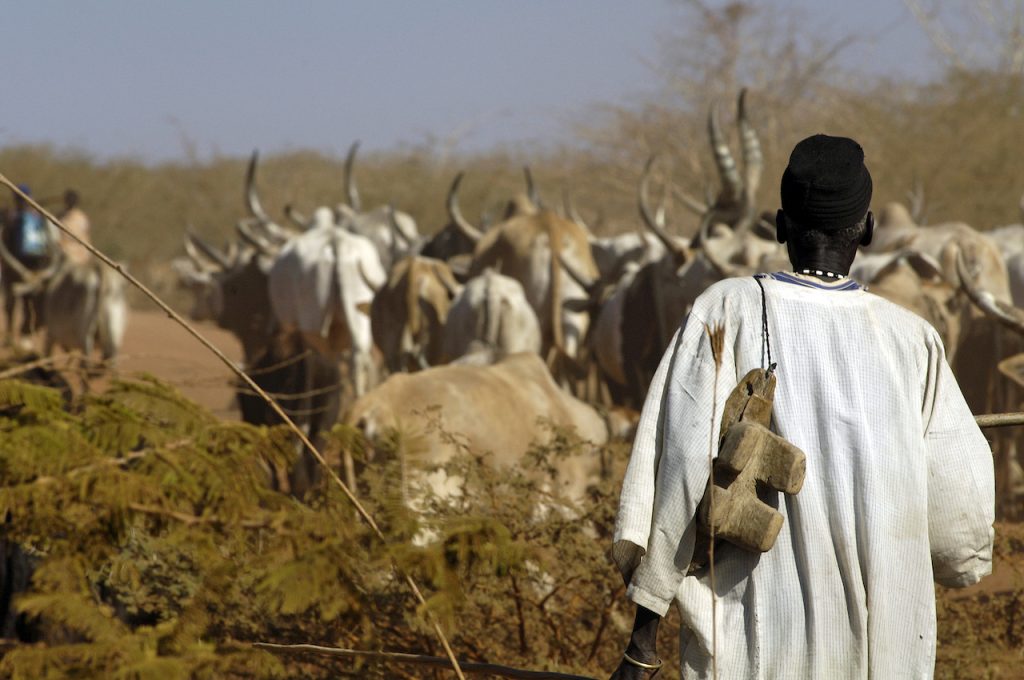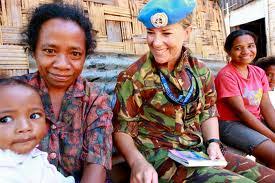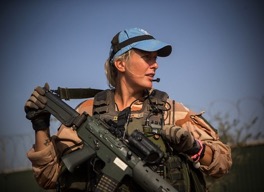A Day In The Life Of A PeaceKeeper Part Two

The UN wasn’t created to take mankind into paradise, but rather to save humanity from hell
~ Dag Hammarskjold
As I explained in my last blog entry, part one of a two-part series, I recently gave a presentation to the Lansing, Michigan chapter of the United Nations Association as part of a popular series called Java Café. The topic that evening was “a day in the life” of a UN Peacekeeper. I relied on examples from one of my books (no longer in print) and from a new manuscript which I hope will soon replace it.
One example was negotiating under fire to reopen the Mogadishu airport.
A Day In The Life – Sudan
Another less stressful and certainly more colorful example of “a day in the life” was taken from my assignment as Head of Office on the volatile border between north and south Sudan. As Head of Office, I oversaw all peacekeeping operations and programs in the Abyei region, an area about half the size of the state of New Jersey.
For centuries, twice a year there occurred large cattle migrations that cycled from pastures in the north, which were green only during the rainy season, to pastures in the south. The pastures in the south were good for grazing during the dry season. As the rainy season began again, herders would repeat the migration and return to the north.
This involved complications on several levels. The owners of the cattle were of the Misseriya culture and are Muslim. Their large herds had to pass through settled farming areas occupied by Dinka, who are Christian, to reach the distant grazing land. They spoke different languages, although they could easily communicate with each other.
In the past, the Dinka farmers had resorted to burning the grass around their villages and fields to deprive the herds of food and force them to move on. When this didn’t work they often fired guns at the cattle, killing some and causing stampedes. This resulted in damage to crops, cattle, houses and of course, danger to innocent bystanders.
Situational Complications
Further complicating this process was the fact that during the recent war, many Dinka had been forced off their land, leaving fewer people in the path of migration. The Misseriya herders had become used to this situation. However, with the return of relative and I fear temporary peace, many Dinka had returned to their farms, and the migration gradually became tenser every year.
Our Civil Affairs Officers used a combination of traditional and modern thinking to arrive at a creative and effective solution. We invited leaders from both the Misseriya and Dinka communities to form joint committees to plan and monitor the annual cattle migrations.
- First, they identified the routes that would be acceptable to both sides; those that would be the most direct while minimizing the damage the herds would do to the small farms along the way. Committee leaders from each side agreed to work with their respective communities to ensure they were aware of approximately when and along which routes the migration would take place.
- Second, as the migrations began in earnest, we made UN helicopters available allowing UN staff and committee members to leapfrog to communities in advance of the herds, to alert and prepare them. The committees had recruited and organized members of the local communities to help guide the herds along, minimizing damage to crops and farms.
This drastically reduced confrontations that in the past had often led to fights and near riots. The members of the committee also enjoyed riding in the helicopter and being de-facto members of the UN at least for a few days (we gave them temporary identification and UN hats), which boosted their status in their communities.
In addition, the members of the migration committees gained excellent experience working together, an experience that was transferrable to other projects. The level of trust among committee members formed a workable bond on which to build for other joint projects and peacebuilding efforts.
Adding More Women To Peacekeeping
Also discussed in the presentation was the critical need for more female staff members at all levels of peacekeeping. Overall, including troop contingents and both international and national civilian UNP staff, less than 10-15% are currently female. Meanwhile in the typical peacekeeping environment over half of the population of those we serve are females and families.
Female UNP’s are initially seen by the resident female population as more approachable, more sympathetic, to be more likely to share many of their same concerns and, as a result, female peacekeepers have a natural advantage in connecting with them.
Additionally, my experience in such assignments as Afghanistan and Sudan shows conclusively that the participation of females is essential in efforts at peacekeeping and peacebuilding.
This is especially so in our efforts to restore stability, rule of law, social justice, and to foster viable societies. The presence of more females as peacekeepers naturally encourages females in the larger society to be more active in these efforts.
Follow future posts here which will include my many travels, peacekeeping, immigration, and the future of US participation in the United Nations.
Connect with Ronald on Twitter, Facebook, LinkedIn, Instagram, Pinterest, and sign up for his newsletter here.


Thanks for this follow-up post. Very interesting to learn more about the role(s) of the UNP, and the resulting input from the local leaders to work on the complexities of conflict.
Thank you Holly. We are about to start posting excerpts from the manuscript of my next book on this site. Hope you enjoy them.